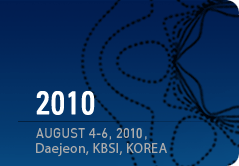 |
|
|
 |
 |
 |
 |
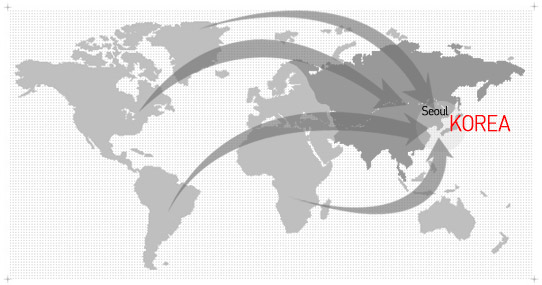 |
| Tucked away in northeast Asia, Korea is a nation that boasts a fast growing economy and a lifestyle that brings together the old and the new. Once known simply as a quiet nation in the East, the peninsula now hardly sleeps as it pulsates with life and commerce. Numerous branch offices of international corporations and businesses can be found throughout the country, as well as most western franchises. Despite all such enthusiasm for modernization and globalization, Koreans still greatly value their 5,000 years of history and the Confucian philosophy that has governed the lives of their ancestors. Many global events take place here annually, with the 2002 FIFA World Cup Soccer Games being the most recent. |
 Time : The date and time will be announced. Time : The date and time will be announced.
Hangeul was invented in 1443, during the reign of King Sejong. It is composed of 10 vowels and 14 consonants. Hangeul has 11 complex vowels,5 glottalized sounds, and 24 basic Hangeul letters. The chart below representsthe 24 Hangeul letters and their romanized equivalents. The Hunminjeongeum,a historical document which provides instructions to educate people using Hangeul, is registered with UNESCO as World Documentary Heritage. UNESCO awards a ¡®King Sejong Literacy Prize', every year in memory of the inventor of Hangeul. |
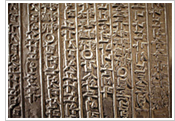 |
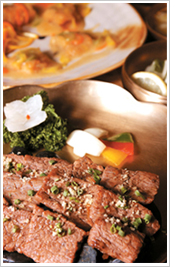 |
 The Korean Food The Korean Food
Korea was once primarily an agricultural nation, and Korea have cultivated rice as their staple food since ancient times. These days Korean cuisine is characterized by a wide variety of meat and fish dishes along with wild greens and vegetables. Various fermented and preserved food, such as kimchi(fermented spicy cabbage), jeotgal (matured seafood with salt) and doenjang (fermented soy bean paste) are notable for their specific flavor and high nutritional value. >> More info on Korean food
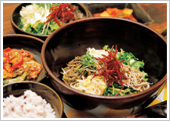 |
 Traditional Korean Clothing (Hanbok) Traditional Korean Clothing (Hanbok)
The hanbok has been the Korean people's unique traditional costume for thousands of years. The beauty and grace of Korean culture can be seen in photographs of women dressed in the hanbok.
Before the arrival of Western-style clothing one hundred years ago, the hanbok was everyday attire. Men wore jeogori (Korean jackets) with baji (trosers) while women wore jeogori with chima (skirt). Today, the hanbok is worn on days of celebration such as wedding, Seollal (Lunar New Year's Day) or Chuseok (Korean Thanksgiving Day). >> More info on hanbok
 |
 Traditional Korean Houses (Hanok) Traditional Korean Houses (Hanok)
A traditional Korean house is called 'Hanok'. Hanok sought to create a living space based on the coexistence of nature and humans. Accordingly, the natural aspects of a traditional Korean houses range from the structure's inner layout to the building materials which were used. Another unique feature of traditional houses is their special design for cooling the interior in the summer and heating the interior in the winter. Since Korea has such hot summers and cold winters, the 'ondol gudeul,' a floor-based heating system and 'daecheong,' a cool wooden-floor style hall were devised long ago to help Koreans survive the frigid winters and to make the sweltering and humid summers bearable. These primitive types of heating and air-conditioning were so effective that they are still in use in many homes today. |
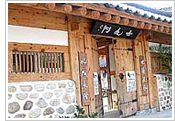 |
 Body Language Body Language
When you beckon to a person, do so with your palm down, and then flutter your hand up and down with your fingers touching together. It is not polite to beckon with your palm up ¡ª especially using only one finger, because Koreans do that only for dogs.
|
|
 |
 |
 |
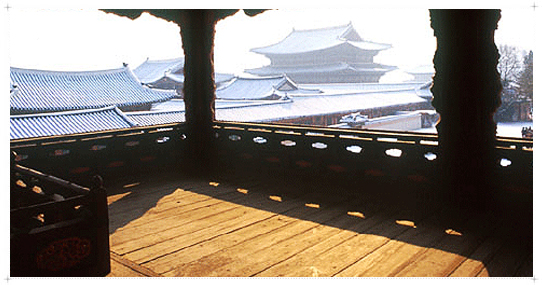 |
Seoul has been the center of politics, economy, culture and transportation of Korea for six centuries. Today one quarter of the nation¡¯s population lives in Seoul, which serves as the broadband core of all branches of knowledge. Seoul preserves numerous relics of the Joseon Dynasty. At the same time, Seoul has risen as a global landmark of modernity, with many must-see attractions.
Seoul is a city of contrasts. From ancient palaces with centuries of history to high-tech skyscraper of steel and glass, from ancient texts dating back millennia to the highest rate of broadband Internet access in the world, Seoul is a place where the old and new exist in harmony. With one foot in the past and another in the future, Seoul is a city that never ceases to amaze.
Seoul is also the center of the so-called ¡°Korean Wave¡± sweeping Asia. As Korean dramas, film and music reach a wider audience abroad, more and more visitors are coming to Seoul to experience first-hand the city¡¯s rich culture and make use of its extensive cultural facilities.
Due to the division of the nation and the proximity of the DMZ with North Korea just an hour¡¯s drive away, some might think Seoul to be a somewhat risky place to visit. Foreign news reports aside, nothing could be further from the truth---Seoul is one of the safest places in the world for foreign travelers, with low levels of crime, a hospitable population, cutting-edge medical facilities and capable police and security authorities. Seoul¡¯s security situation, in fact, has never been better.
 |
 Area Area
The total area of Seoul is 605.52 square kilometers, or 0.6 percent of the entire country. The Hangang (River) bisects the city into two parts: northern part (Gangbuk) and southern one (Gangnam). The expansion of the city has been curbed since the last administrative reorganization in 1973. The lifestyles of Seoul citizens, however, have been influenced since the 1970's by to the rapid growth of satellite cities around the capital area.
|
 Population Population
Seoul has a population of 10,297,004 as of the end of 2005. This accounts for about a quarter of the total national population.
|
|
 |
|




